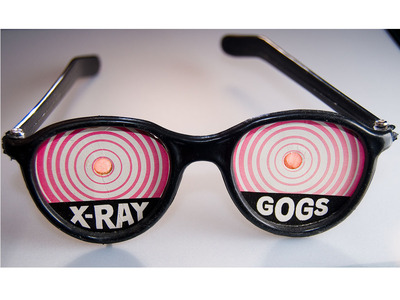I agree with Steve Alexander of the Minnesota Star Tribune when he writes, “If consumers only knew what went into food safety, they might think they’d slipped into a James Bond movie.”
Which is why I’ve been urging companies, producers, retailers, to publicly flaunt their food safety efforts for 20 years, and am now convinced an effective way to build a food safety culture within any operation from farm-to-fork is public marketing of food safety efforts.
At Legendary Baking in Chaska, the pies it makes for Bakers Square restaurants and local grocery  stores are X-rayed to make sure there’s nothing inside but pie.
stores are X-rayed to make sure there’s nothing inside but pie.
The completely automated machines X-ray a pie and use a computer to analyze the image in a second or less, then eject it from the assembly line if it appears to contain a foreign object.
That’s not unusual in the food industry, where products have long been subjected to X-ray machines, metal detectors or special weighing devices to weed out objects such as metal or plastic parts that might fall off an assembly line.
"We have been using X-rays for seven years to eliminate the potential for dense foreign objects in products," said Steven Hawkes, general manager of the bakery in Chaska, a unit of American Blue Ribbon Holdings in Denver.
Hawkes declined to say whether the machines had ever found any foreign objects in pies.
While assembly line X-ray machines are expensive — they sell for tens of thousands of dollars each — food companies find the cost is well worth it, said Ted Labuza, a food engineer in the Food Science and Nutrition Department at the University of Minnesota in St. Paul.
"Compared to the cost of product liability lawsuits, X-ray machines are cheap," Labuza said. "Under Minnesota law, manufacturers are 100 percent liable if their product causes damage, and in most other states it’s the same."
The X-ray machines, which cost $45,000 to $70,000 each, are about 98 percent accurate in detecting contaminant particles as small as 1 to 2 millimeters in diameter, said Bob Ries, Thermo Fisher’s lead product manager for metal detection and X-ray products.
At Legendary Baking, the Thermo Fisher machines can scan one or two pies per second, Ries said.
Consumers might be surprised to know how many products they use have been X-rayed, Ries  said: "anything in foil, foil tops or cans" and a lot of glass bottles.
said: "anything in foil, foil tops or cans" and a lot of glass bottles.
"If you walk through a grocery store, there’s a 99.9 percent chance that a product there went through either an X-ray machine or a metal detector," Ries said. "Companies do it to avoid recalls and protect their brand names."
What those X-ray googles to help see bacteria that might be contaminating a $0.50 pot pie?
